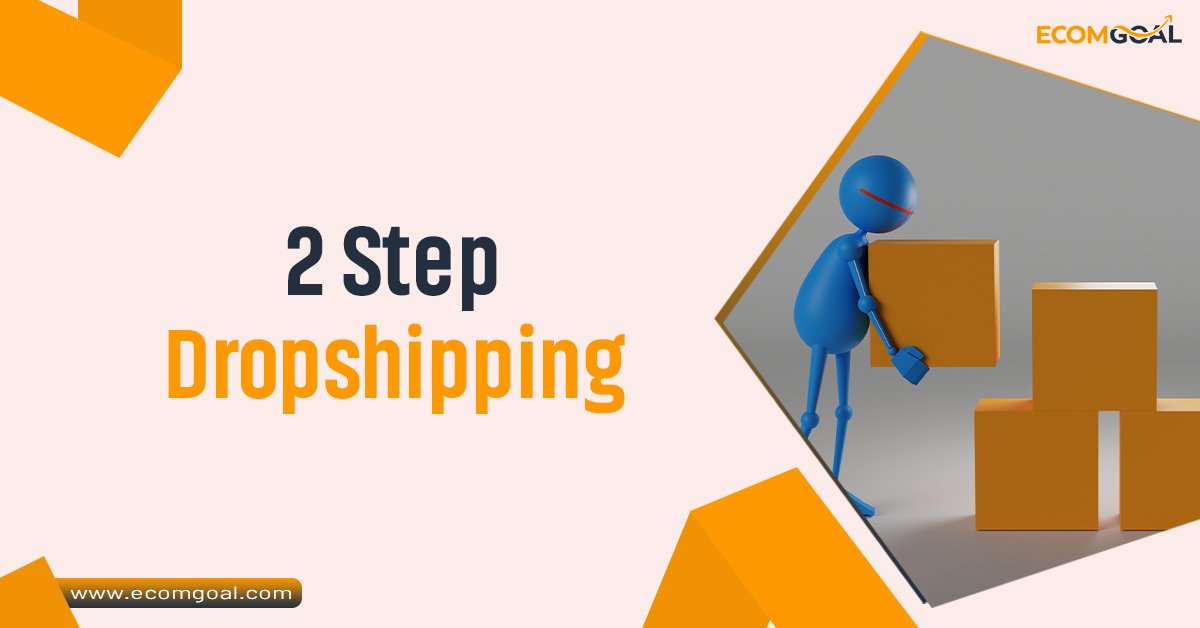
Dropshipping has revolutionized the e-commerce industry, enabling entrepreneurs to start businesses with minimal upfront investment. Traditionally, dropshipping involves partnering with suppliers who ship products directly to customers on behalf of the store owner. However, with the growing competition and the need for better customer experience, a new model known as 2 step dropshipping has emerged. This method addresses some of the limitations of traditional dropshipping while offering additional benefits.
In this article, we’ll explore the concept of 2 step dropshipping, how it works, its advantages, challenges, and why it’s becoming a preferred method for modern e-commerce businesses.
What is 2 Step Dropshipping?
2 step dropshipping is an evolved model of the traditional dropshipping process. It involves two distinct steps in the supply chain:
- Step 1: Bulk Purchase and Warehousing
The retailer or intermediary buys products in bulk from the manufacturer or supplier and stores them in a third-party warehouse or fulfillment center. This step allows the business to have inventory readily available in a location closer to the target market. - Step 2: Direct-to-Customer Fulfillment
When a customer places an order, the stored products are picked, packed, and shipped directly from the warehouse to the customer.
This method combines the benefits of traditional dropshipping with added control over inventory, faster delivery times, and improved customer satisfaction.
How Does 2 Step Dropshipping Work?
The process of 2-step dropshipping typically involved the following:
- Supplier Partnership:
The e-commerce retailer partners with manufacturers or wholesalers to source products at a competitive rate. Instead of ordering on a per-customer basis, the retailer places bulk orders, ensuring better pricing and reducing per-unit costs. - Warehousing Solution:
The bulk inventory is shipped to a warehouse or third-party logistics provider (3PL). These fulfillment centers are strategically located near key markets to minimize shipping times & costs. - Inventory Management:
Modern 3PL services often provide real-time inventory management systems. Retailers can track stock levels, manage restocking schedules, and gain insights into product demand. - Order Fulfillment:
When an order is received, the warehouse handles the picking, packing, and shipping process. This ensures that the customer receives their product efficiently and reliably. - Customer Support and Returns:
Returns and customer inquiries are handled through the retailer, providing a seamless experience for buyers.
Advantages of 2 Step Dropshipping
2-step dropshipping addresses several pain points of the traditional dropshipping model while offering unique advantages:
- Faster Shipping Times
By warehousing products closer to the target market, delivery times are significantly reduced. In an era where customers expect same-day or next-day delivery, faster shipping enhances competitiveness. - Quality Control
In traditional dropshipping, sellers often have limited visibility over the quality of products shipped directly from suppliers. With 2-step dropshipping, sellers can conduct quality checks during the bulk purchase process, ensuring customers receive high-quality products. - Branding Opportunities
Many 3PL providers offer custom packaging, branded inserts, and tailored unboxing experiences. This helps businesses build a strong brand identity and foster customer loyalty. - Cost Efficiency
Bulk purchasing often leads to lower per-unit costs, enabling higher profit margins. Additionally, shipping costs are reduced when products are stored closer to customers, avoiding high international shipping fees. - Better Inventory Management
Retailers have greater control over stock levels, allowing them to meet demand more effectively. Overstocking and stockouts can be minimized with proper inventory forecasting. - Improved Customer Satisfaction
Enhanced delivery times, better product quality, and branded experiences contribute to higher customer satisfaction and repeat purchases.
Challenges of 2 Step Dropshipping
Despite its advantages, 2 step dropshipping is not without its challenges. Understanding these obstacles is essential for businesses considering this model:
- Upfront Investment
Unlike traditional dropshipping, 2 step dropshipping requires an initial investment to purchase inventory in bulk. This may deter entrepreneurs with limited budgets. - Inventory Risks
Holding inventory comes with risks, such as unsold stock or products going out of trend. Proper market research and demand forecasting are crucial to mitigate these risks. - Warehousing Costs
Storing products in a 3PL facility involves storage fees, which vary depending on the size, volume, and duration of storage. These costs need to be factored among pricing strategies. - Complexity in Operations
Managing inventory, coordinating with warehouses, and handling logistics add layers of complexity compared to the simplicity of traditional dropshipping. - Return Management
Handling returns can be challenging, especially for international orders. Having a clear return policy and an efficient reverse logistics process is vital.
Who Should Consider 2-Step Dropshipping?
2-step dropshipping is ideal for:
- Established E-Commerce Businesses: Those looking to scale operations and improve delivery speed.
- Brands Focused on Customer Experience: Businesses that want to enhance their brand identity with custom packaging and faster shipping.
- High-Demand Niches: Sellers in markets with steady demand for specific products, reducing the risk of unsold inventory.
- Entrepreneurs with Capital: Individuals who can afford the upfront costs of bulk purchasing and warehousing.
Tools and Platforms for 2-Step Dropshipping
Several tools and platforms can streamline the 2-step dropshipping process:
- Warehousing Solutions: Services like Amazon FBA, ShipBob, or Deliverr offer warehousing and fulfillment tailored to e-commerce businesses.
- Inventory Management Software: Tools like TradeGecko or Skubana help manage stock levels, forecast demand, and streamline operations.
- Shipping Integrations: Platforms like ShipStation or Easyship provide end-to-end shipping solutions with real-time tracking.
- E-Commerce Platforms: Shopify, WooCommerce, and BigCommerce integrate seamlessly with 3PL providers and inventory systems for efficient order management.
2-Step Dropshipping vs. Traditional Dropshipping
| Feature | Traditional Dropshipping | 2-Step Dropshipping |
|---|---|---|
| Inventory Ownership | No | Yes |
| Shipping Time | Longer (direct from supplier) | Shorter (from local warehouse) |
| Branding Opportunities | Limited | Extensive |
| Cost Efficiency | Low upfront costs | Better margins through bulk |
| Customer Experience | Moderate | Superior |
Conclusion
2-step dropshipping is a powerful strategy that blends the benefits of traditional dropshipping with the control and scalability of owning inventory. While it requires more capital and operational planning, the advantages in shipping times, branding, and customer satisfaction make it a compelling choice for ambitious e-commerce entrepreneurs.
As customer expectations continue to rise, businesses adopting 2-step dropshipping are better positioned to compete in the fast-paced world of e-commerce. For those willing to invest in a more sophisticated supply chain, this model offers a pathway to sustainable growth and long-term success.

Hello, I am an E-commerce Expert with extensive experience providing services to numerous e-commerce brands and individuals since 2017. My primary areas of expertise include the Amazon, Walmart, and Shopify marketplaces. Linkedin
